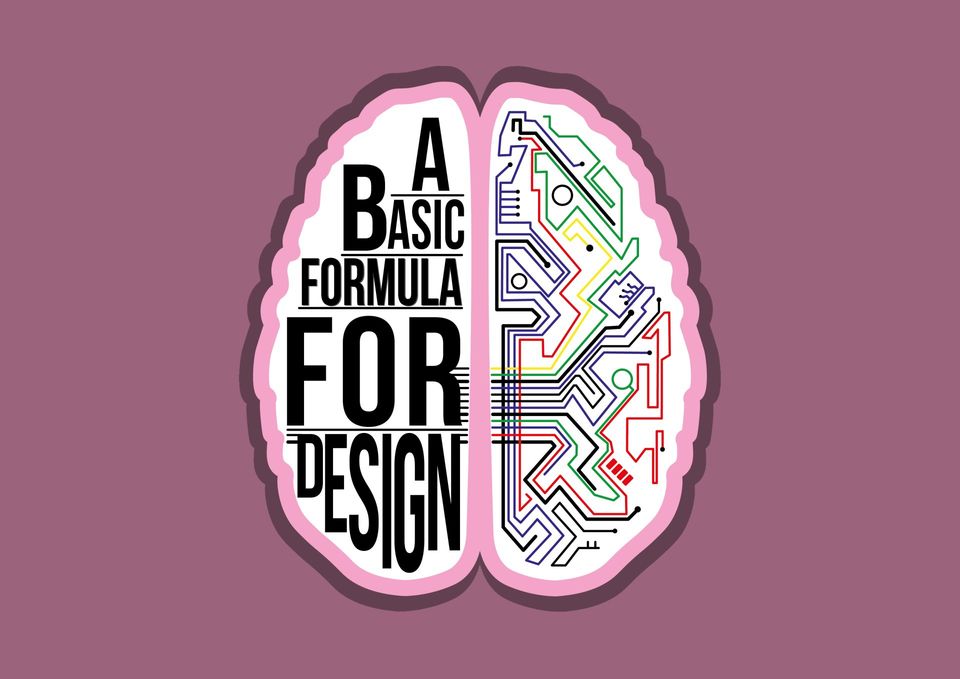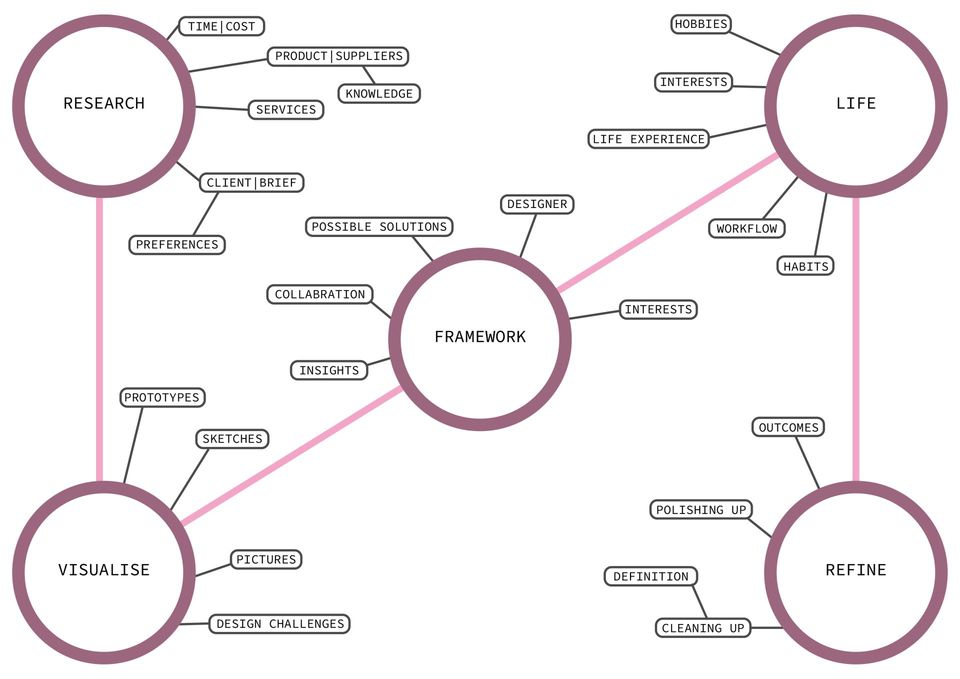A Basic Formula for Design
David Craig • February 19, 2020
Understanding The Creative Process

IMAGE BY BRAYDEN WARD
Have you ever attempted to follow a set of assembly instructions, but find yourself throwing them to the floor before continuing anyway, fumbling along with a frustrating sense of purpose? Although the assembly continues, those who do so, are intrigued, interested, non-conforming, courageous, independent, or self-centered. Fear not, designers do this too, advocating around personality. This helps drive ideas and opinions, just like human behaviour affects the way you read boring instructions.
If that is the case, can logic and thinking give us a greater purpose than following set instructions? Activists, street performers, designers all face the same kind of challenges, prompting human behaviour. However, we need to ask the question, does behaviour happen when designing within a business? Do studios adhere to theological models? And if this is the case, what does the process look like?
First, let's start from the beginning, understanding the designer’s role. Design umbrellas many disciplines. Its true designers juggle with many roles on top of creativity, some include taking on research, reporter, creator, inventor, entrepreneur, etc.
These roles help shape and determine the very nature of the designer we become. While on the surface most studios and agencies seem to focus on some roles more than others, don't be fooled, in some way or another they will experience these duties.
For instance, architects will draw, plan and review designs for the construction of buildings, while during the process of the project a designer may be tasked with the research of new building requirements, plan site reviews, assist with engineering challenges, employ suitable services, source information for prototypes, etc.
Now that the role of a designer is clear, let's now take a look at the process of design. Out of all the models available, we have chosen the Double Diamond. Developed by the British Design Council, it has been educated from twenty-five different processes. The diagram is shaped to indicate the confirmation of a problem (brief) to define the solution.
Image British Design Council
These hold four core values - Discover, Define, Develop, and Deliver. The tool can market a designer, but understanding the main feature is paramount. Divergent and convergent thinking. Regardless of how the process plays out in the workplace, it helps investigate projects further and of course, attracts systematic methods. For agencies, marketing your process is a no brainer for more clients.
Even though this systematic approach seems rigid, it is not. Creatives manipulate the model to better suit their workflow or the studio’s workflow. Something that is structured but still works well when adapted and changed. Beauty in change.
Whether a junior, senior or established designer, it is clear that the roles and stages of design can simultaneously change subject to the requirements of the brief. These insightful selectiveness, through structure playing in the designers’ favour. Of course, this is for the better. As a pick and mix, designers unconsciously choose stages of the process.
In fact, it seems like for any individual, team, project, company or problem - the process holds immense value and is ever important for developing forward. This is why we have developed A Basic Formula For Design. We’ve injected a sense of self-belief, a design that designers can make their own.
Process is important, but sometimes it gets in the way without you knowing it. One way to recognise this is simply designing around problems the easier way. Designers need to make the problem more personal and contextual.
Renown designer Wim Crowel said that “of course design is about problem-solving, but I cannot resist adding something personal”.
Just as a building design starts with a foundation, all designers start with a brief. This brief identifies one common stage in the process - creatives stick to parts of the brief (following the double diamond) but later deviate from other parts.
IMAGE BY BRAYDEN WARD | EMMA SLAVIN-HALL
A Basic Formula For Design: regard it as the holy grail or not, this process fits across all disciplines and opens up space in life. Why? Because designers almost always take what they do at work, home with them either physically or mentally. Realising the potential of life experience, activities and hobbies outside of work.
This process is traditionally taught in schools across the globe, embracing a force of habit to the designer’s workflow. The ‘formula’ at its core underpins a project from onset-to-output. For better or for worse, creatives have to question the requirements of the working brief; What is possible? Are there any boundaries? What is the budget? It’s like a mathematical equation, but resolve the main points and you have the foundation of your project.
Yet, designers don't fully adhere to a creative process. Today many designers, if not all, integrate research before any creativity takes place. In due course, reflecting the formula, designers can change the process to fit beneficially for the brief.
During the process of design, it can seem uncertain. Influencing the framework of a designer. These affect internal and external sources, in work and in life. However, A Basic Formula For Design ensures that all aspects of design are included, whether things are subject to change. This could be any number of things; The client requests a change, the timeframe pushes the initial research forward, budget limits the number of prototypes, etc.
This offers up evidence of what is missing from previous models in design. While reasoning why you (designers) might deviate from stages of the process for other projects. The pinnacle for understanding life and real-life scenarios and how it can affect the process.
Don't be put off by the reductions in choice, we see this as adding value rather than taking away. The Formula works hand-in-hand with the designer leaning towards change, offering more possibilities. A space to do more, a space to learn and a space to match real-life complexities.
Zig against the zag, design to the problem and away from ambiguity. List, tick and specify what seems correct for the working brief. Let the unknown intrigue you, just like you did when reading those boring instructions. Question everything. The journey between the client-and-brief to brief-and-designer surrounds an entire atmosphere of information (make it easier and use a formula that works for you). We hope this strikes a level of nostalgia and understanding for why you work the way you do, or why the studio operates the way it does.
Written BRAYDEN WARD
Illustrated by BRAYDEN WARD | EMMA SLAVIN-HALL
Edited EMMA SLAVIN-HALL | DAVID CRAIG
Articles

The United Nations has described the disruption to education caused by the pandemic as ‘unparalleled’. At the virus’ worldwide peak in April, it is estimated that over 90% of all enrolled learners, from kindergarten to bachelors and beyond, had their education affected by school closures and the pandemic (UNESCO). For many university students and older children, they have had to adapt quickly to online learning. They can keep in touch with their peers and teachers online and continue their studies, albeit in a highly modified way. As challenging as this may be, this experience will help equip them for a future that is increasingly online. For parents of younger children, they are assuming a new role: their child’s home school teacher. This is in addition to their usual childcare and household duties, their work responsibilities and often emotional and financial worries caused by the pandemic. Stressful? Yes. The good, and somewhat surprising, news? The experts advise that you don’t teach your children - at least not in the way you might expect.

If the recent outbreak of Covid-19 has taught us anything, it's that many adults do not wash their hands effectively. It has never been more important that we support our children to develop good personal hygiene to keep themselves and our families safe. This seemingly easy task can be very difficult for children with fine motor skill difficulties. In this article, we explore some ideas to support your child with hand washing.

Lockdown has brought the digital future into the now. Online shopping, entertainment, education and more have moved from the periphery to the mainstream to, in many cases, the only option. With the necessity of social distancing looking to continue for many months, it appears that this rapid digital revolution is here to stay. This means that life as we know it, in most of its sectors, has changed forever. In order to survive, businesses are having to adapt rapidly, embrace technology and look to the future. Architecture is no exception. There has been a widespread adoption of technology and VR over the past few months in response to the lockdown across all of society. Elderly grandparents who were once resistant to adopt new technologies talk of “Zooming” and have started video chatting with their family members to combat loneliness. Art galleries that were once considered stuffy or pretentious are now pioneers in VR technology, with Google Art & Culture offering tours of London’s National Gallery or the Musee D’Orsay in Paris. These virtual tours deliver art in a dynamic new way that can be far more engaging than regular photos. Critics have applauded the panoramic and immersive views of gallery building and exhibitions which work well for rendering of 2 dimensional art, however impressions of sculpture is somewhat lacklustre. With VR technology, users can enjoy a truly immersive experience in the comforts, and safety, of their own home. The COVID-19 pandemic has served as an accelerant for the arts and entertainment industries to embrace VR.





